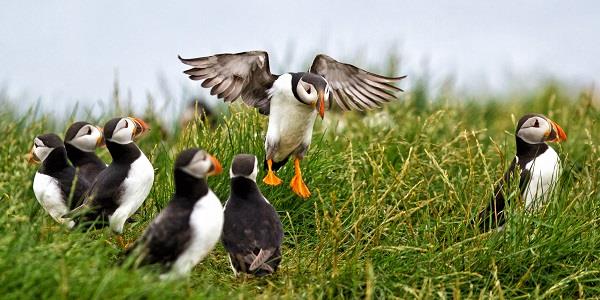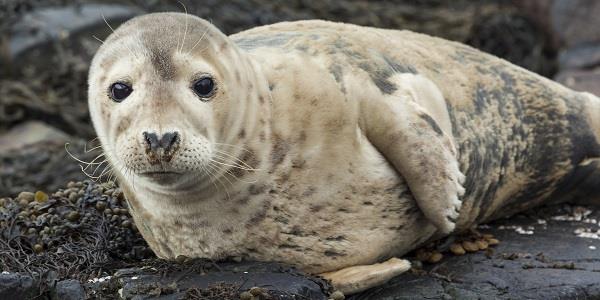
For those with an historical or religious bent, the Holy Island of Lindisfarne, easily reached from Lucker, is a place of pilgrimage. In 635AD Saint Aidan came from Iona and chose to found his monastery on the island, which became a wellspring from which the Christian message was spread throughout the world. The island is accessible by car at low tide via a causeway – but take care!
Over time though, some of the ‘Culdees’, the really hardcore believers for whom the Lindisfarne priory was presumably too soft an option, relocated a few miles southeast to the Farne Islands (at top), a group of 15 to 20 islands (tides depending) between 1½ and five miles from the mainland.
Life must have been harsh indeed. Elemental, even. But the islands were intermittently occupied by ascetically-minded hermits and monks from the 7th Century until 1536, when the axe fell as part of Henry VIII’s Dissolution of the Monasteries.
The islands remained in religious ownership until 1894 when they were bought by the industrialist William Armstrong. Today, owned by the National Trust, they have no permanent population.

No permanent human inhabitants, anyway. But the Farne Islands are a mecca for ornithologists. There are more than 20 different varieties of seabird making a temporary or permanent home on the islands, including fulmars, cormorants, roseate terns (an endangered species), guillemots, razorbills and puffins (above). The latter are very popular with visitors, and in warmer weather it’s well worth taking a licensed boat trip from Seahouses out to the islands to see the birds up close.
Which is all well and good – but seabirds lack a certain ‘cute’ factor, don’t they? You wouldn’t want to cuddle a razorbill. Even puffins, with that sad-clown face: endearing, but not disarming.
Not like baby seals, say.

Good news, then: the number of Atlantic grey seal pups being born on the Farne Islands has reached a record high, with about 2,600 counted this season, against 1,740 in 2014: a five-year rise of nearly 50%.
A protected species, grey seals are thought to number some 300,000 worldwide, half of them living in British and Irish waters. As well as the Farne Islands colony, seal pup numbers have also risen sharply at the Trust’s Blakeney Point nature reserve in North Norfolk, close to Barnham Broom, with over 2,800 new pups, against 2,000 in 2014.
In both instances, the growth in numbers is thought to be the result of a good food supply for the seals, and a lack of predators.
So when you’re holidaying at Lucker, do take the boat trip out to the Farne Islands. Where feathered and furry friends abound.

